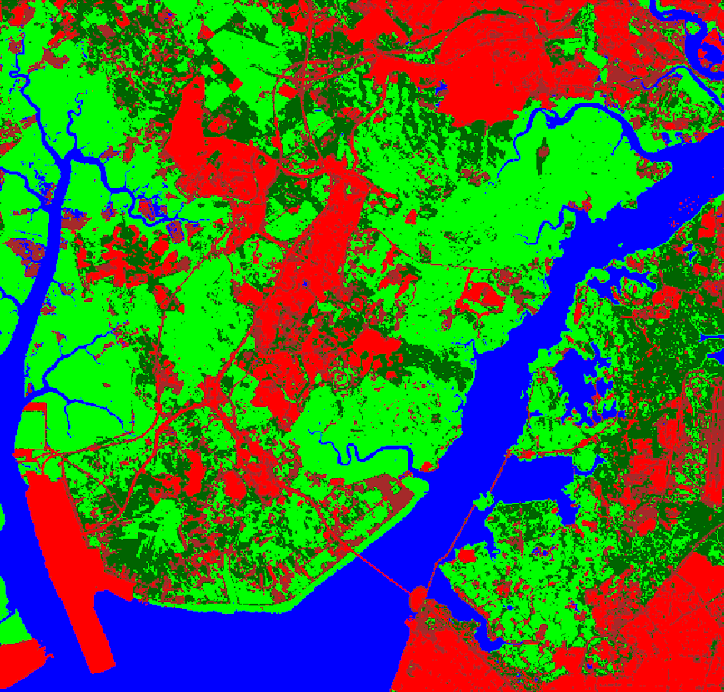Image classification refers to the task of extracting information classes from a multiband raster image. The resulting raster from image classification can be used to create thematic maps. Depending on the interaction between the analyst and the computer during classification, there are two types of classification: supervised and unsupervised.
Supervised classification method is the process of visually selecting samples (training data) within the image and assigning them to pre-selected categories (i.e., roads, buildings, water body, vegetation, etc.) in order to create statistical measures to be applied to the entire image. ‘maximum likelihood’ and ‘minimum distance’ are two common methods to categorize the entire image using the training data.
Unsupervised classification method is a fully automated process without the use of training data. Using a suitable algorithm, the specified characteristics of an image is detected systematically during the image processing stage. The classification methods used in here are ‘image clustering’ or ‘pattern recognition’. Two frequent algorithms used are called ‘ISODATA’ and ‘K-mean’.

Image Processing
Image processing is a method to perform some operations on an image, in order to get an enhanced image or to extract some useful information from it. It is a type of signal processing in which input is an image and output may be image or characteristics/features associated with that image. Nowadays, image processing is among rapidly growing technologies. It forms core research area within engineering and computer science disciplines too.
Image processing basically includes the following three steps:
- Importing the image via image acquisition tools;
- Analysing and manipulating the image;
- Output in which result can be altered image or report that is based on image analysis.
There are two types of methods used for image processing namely, analogue and digital image processing.
Analogue image processing can be used for the hard copies like printouts and photographs. Image analysts use various fundamentals of interpretation while using these visual techniques.
Digital image processing techniques help in manipulation of the digital images by using computers. The three general phases that all types of data have to undergo while using digital technique are pre-processing, enhancement, and display, information extraction.